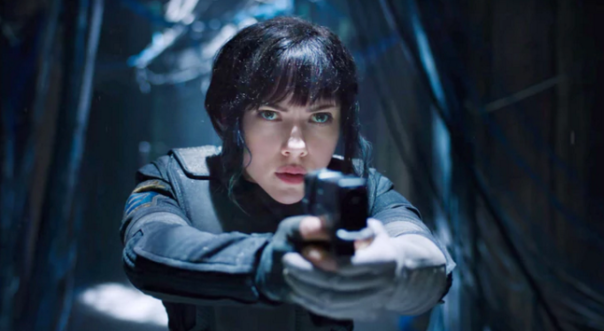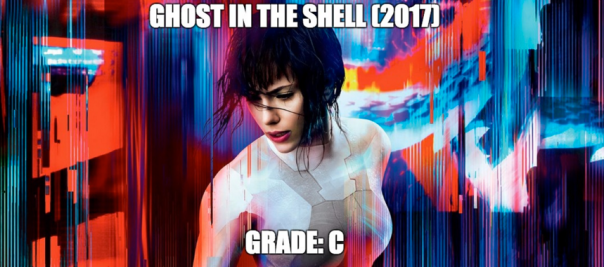As a kid of 90’s origin, I’ve grown up with Japanese animation for quite some time. From the typical Toonami programming my childish brain lived on, to the cultural evolution it took when going into Miyazaki’s more mature titles, anime shaped me into one heck of a person. Though other titles were more influential to my personal story than others, part of that growth involved a title called Ghost in the Shell.

Intimidated by the many trailers that Manga Entertainment attached to their various VHS releases, for a long time this film was one that shook me to my core. It wasn’t because the images were “scary,” but because they reflected a grander scale of both violence and confidence than I was ever ready for in my tween years. But I eventually saw the movie from start to finish, and it left me feeling impressed and (of course) inspired—like it did the Wachowski’s (who would eventually make their love letter to it in The Matrix) and countless other artists and filmmakers throughout the years. And all of this, my friends, has led me to this post—a review of the 2017 live action Ghost in the Shell.
In this American hodgepodge of the original animated classic, we see the creation of The Major (Scarlett Johansson), a warrior made by the mysterious company Hanka Robotics. She has a ghost (her human brain/soul) living inside of a cybernetic organism “shell.” Her memories of the past are clouded significantly, leaving only some various glitches to give her breadcrumbs to her true identity. While curious for the answers, Major’s job is to hunt down cyber terrorists with the group known as Section 9. Will a new case involving a man named Kuze help her uncover the clues? And what secrets has Hanka Robotics been keeping? Well, in true Hollywood fashion, all of these get answers—but not in the way you (or I) would have expected.

Firstly, I’m sure many of you want me to discuss Ms. Johansson in this role. While at first Scarlett does her usual tricks of being the stone-cold warrior beauty that Hollywood and audiences adore, when you try and look at the “acting” choices she’s gone with, you begin to realize that Johansson seems too stuck on the cyber part of her character. While at times, she has her moments of brilliance, this Major is really the kind of role that could have been brought to life by anyone and Johansson isn’t anything special by fan-casting comparisons.
As for behind the camera, director Rupert Sanders and cinematographer Jess Hall clearly get the visual language of this property. With imagery that serve as outstanding tributes to what had come before in this franchise, this movie in many ways is a sight to behold. But much like looking at the dating profile of some hot individual that catches your eye, beauty and physical appeal can only take a movie so far. And much like Sander’s other high profile projects (Snow White and the Huntsman) there isn’t too much within the “ghost” of this movie. Because when you peel off the skin, what this new Ghost in the Shell is is just a college thesis that has been reduced to a high school level Sci-Fi revenge story.

Now, I’ll be frank—I live in America, and at this point, I don’t expect a lot out of big Hollywood movies. And for a while, I was going to write off this Ghost in the Shell into a similar category of what I like to call “Fluffernutter filmmaking,” where a studio tries to understand a property that is layered and complex, and reboots it into a progressively more fluffy retelling to fill seats with the most basic of moviegoers. Brainless and entertaining—that is a lot of the kind of movie Hollywood loves to make to get a quick buck. But by the third act, I can say with ease that Ghost in the Shell tries way too hard to be considered groundbreaking, and effectively shoots itself in the cinematic foot.
This is mostly pointed in the direction of Major’s true origins, an element of the story that was never really present in the 1995 film, and only vaguely mentioned in the Stand Alone Complex series. Now as reboots/retelling should, this movie tries to expand that material in a new direction…but that direction is an odd one. Because if we were to examine it (without giving too many spoilers) could the creative team have been trying to make a statement about diversity in media? Probably, but without ruining the story, the way they go about it is a bizarre mixture of immaturity and is too jarring to really stomach. And even if I didn’t have the context of seeing the source material, this is an ending I’d find hard to process.

Sure, Ghost in the Shell is easily the best American anime-to-live action produced adaptation (…though truthfaully that isn’t really saying much). Some characters get proper moments to shine (specifically Batou, played by Pilou Asbæk, who even gets to play with his beloved basset hound) and tiny details that are refreshing (mainly the techno-driven score by Clint Mansell and the casting of the legendary Beat Takeshi as Aramaki). But none of these features ever make the movie leap to greatness, but more just by-the-numbers passable entertainment at best.
If the original Ghost in the Shell hadn’t existed, who knows what the modern world of science fiction would be like. But is cinema better now that we have a live action version with a very popular American actress in the lead role? No. In fact, nothing has effectively changed. And especially once you know the ending to this remake, it perfectly stands as an example of Hollywood’s biggest problem: it never knows when to step away and put the foot on the breaks. And if it did, maybe we’d instead be talking about the progress the movie industry is making, rather than having me sink into my seat further and further with every release.

